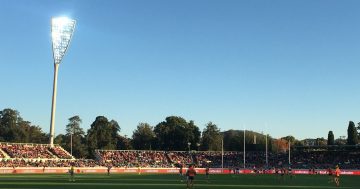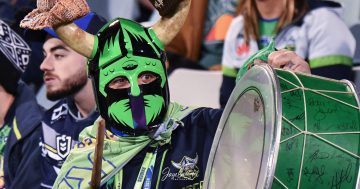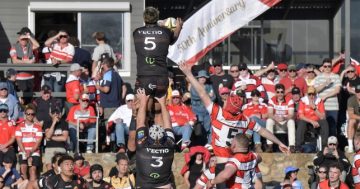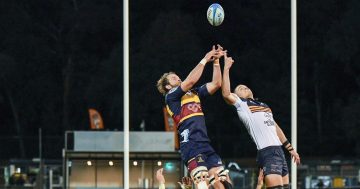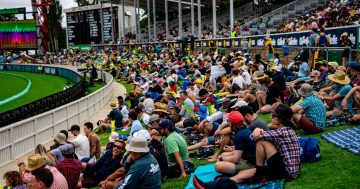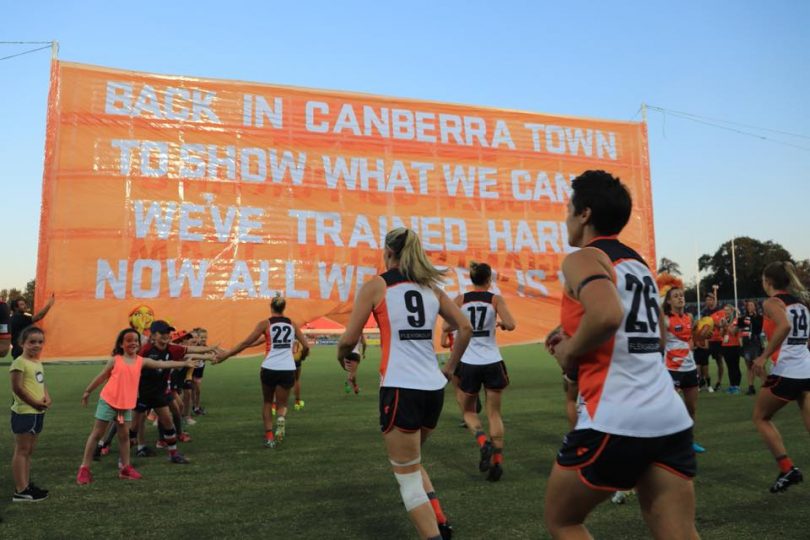
We know the price, but what’s the value of GWS playing in Canberra? Photo: File.
It has to be said, the AFL is in a class of its own when it comes to negotiating deals with governments across Australia.
As the biggest code in the country, they have enormous bargaining power with demand for the live product at an all-time high.
You only need to look at the negotiations going on at the moment between the AFL and the Tasmanian Government over the stadium requirements if Tassie is to secure an AFL licence.
Closer to home, the AFL and GWS have secured a significant increase in their agreement to play premiership games at Manuka Oval.
The new 10-year deal, which runs until 2032, is worth $28.5 million to GWS. That’s an increase of $5.5 million.
In return, GWS will play at least three AFL men’s premiership games in Canberra and two AFLW matches each year.
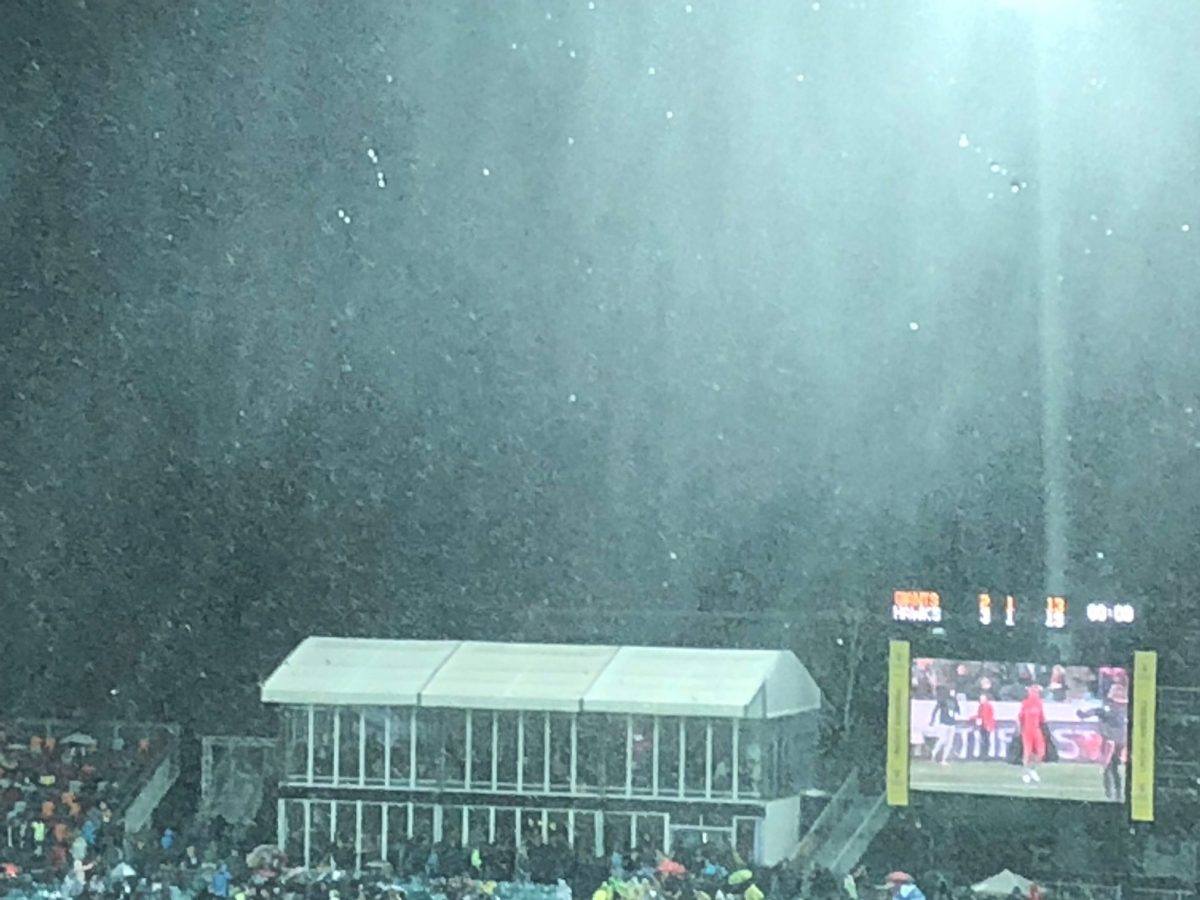
Who could forget: GWS and the Hawks at Manuka Oval as the snow falls during Round 21, 2019. Photo: Supplied.
In terms of government payment per game, it’s a generous deal to say the least.
In 2023 GWS will play the Bulldogs, Brisbane and the Gold Coast in Canberra.
The Bulldogs game in Round 8 is the obvious standout. It will be broadcast free-to-air and will attract considerable coverage.
The matches against Brisbane and the Gold Coast would have struggled to attract a crowd at the GWS home ground in Sydney.
And what’s the argument from GWS in securing the $28.5 million deal? Money will be generated for Canberra businesses because of the games played at Manuka. Fans will travel to the ACT for the games. This will generate tourism and will also help to develop the code regionally.
It is far easier to estimate the value to the City from AFL games because of the proximity to Manuka and Kingston, while it is harder to estimate the value to the business community of NRL and Brumbies games at Bruce.
GWS has done well in developing the code over the past 10 years, resulting in participation growth, particularly with women taking up the sport.
Nonetheless, the deal is sure to raise the blood pressure of Brumbies and Raiders management when comparing the financial reward to GWS per game, compared to compensation to the Raiders and Brumbies.
The Raiders are in the midst of a five-year deal worth $13 million, while the Brumbies are nearing the end of a two-year deal worth $3.5 million.
For context, it needs to be mentioned that both the Raiders and the Brumbies have benefited financially through ACT Government support for the establishment of their training and administration headquarters.
Another issue sure to be raised in future negotiations between the Brumbies, Raiders and the ACT Government is the fact that both teams are based in the city, not Sydney.
The Raiders and the Brumbies, and their families, live in Canberra and spend the majority of their income in the city.
Another factor worth noting is the number of free-to-air games featuring the Raiders next season, which should be considered in relation to each home game’s value.
The Raiders will play eight free-to-air games, which will be televised on Channel 9 in 2023. This includes four games played at Canberra Stadium. Both the Raiders and the Brumbies attract supporters from outside the ACT to games at Canberra Stadium.
The national appeal of AFL, when compared to the NRL and Super Rugby, shouldn’t be forgotten when considering support for the code.
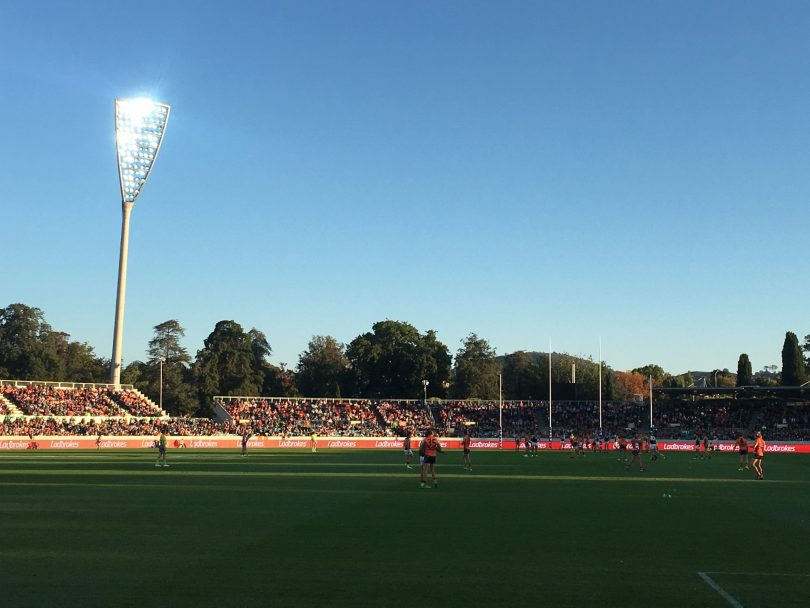
GWS Giants v Port Adelaide at Manuka Oval in April 2017. Photo: File.
Yet both rugby league and rugby union have been busy developing the codes in Canberra. They have lifted their game, demonstrating considerable growth in the number of women participating.
The emergence of soccer and a potential A-League men’s team will be another factor to consider in the funding mix, as is the potential of a Canberra NBL side.
The ACT government will need deep pockets.
When it comes to considering whether the GWS deal is a good one for Canberra or not, one thing is certain, it’s a great deal for GWS.












